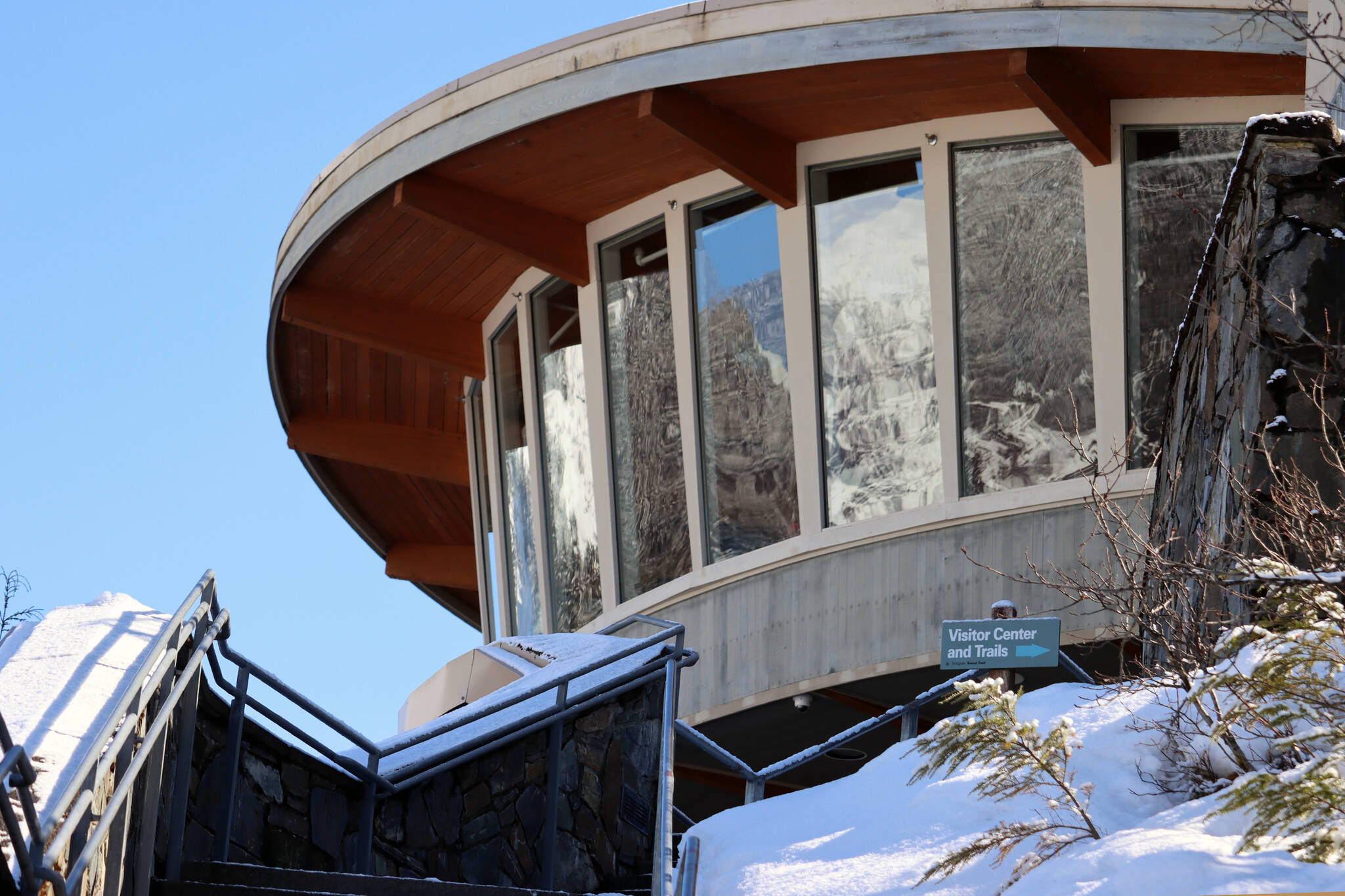Sometime in the 1970s, the U.S. Forest Service published a multipage brochure for visitors to the Mendenhall Glacier. It described the glacier as “receding very slowly” while also noting that “studies of past glacial fluctuations suggest that it may soon be advancing once more.”
We know that hasn’t happened.
Now we have an idea hatched from the agency’s anxiety that the shrinking Mendenhall is diminishing their role as caretaker of the “most spectacular view of North America’s most accessible glacier.”
The USFS is considering chasing the glacier’s retreat by constructing “Four to six seasonal, relocatable building modules (up to 600 square feet each) near the glacier.” They would be dismantled every fall and reassembled every spring. And every five to 10 years, they’d “be relocated to follow the glacier as it recedes.”
In 1997, I was the project engineer for the expansion of the current visitor center. The final bill for that came in well above the engineering cost estimates. For about $4.5 million, very little square footage was added. The difficult hilltop terrain helped drive the construction cost up.
The proposed modular structures will be on similar terrain that’s far more remote. Removal and reinstallation every year will likely involve helicopters. Additionally, there would be floating docks to transport visitors from the existing visitor center parking lot to a trailhead below the remote stations. All of that will come with a relatively hefty price tag.
The Draft Environmental Impact Statement didn’t include cost estimates though. On the other side of the cost question is benefit, which while harder to quantify is not adequately addressed either.
But as we all know, none of this is being considered for improving the experience of Juneauites visiting the glacier. The entire project, of which the remote visitor facilities are just one part, is being driven the explosion in cruise ship tourism over the past 20 years.
While DEIS claims in one place that the project is “needed to continue to provide quality opportunities for all visitors,” that’s followed by acknowledging it’s also “to meet the demand of the visitor industry.” Elsewhere it states the “infrastructure is designed to meet the visitor use demands of the primary use season,” by which they mean the tourist season.
So let’s peel back how the USFS is confusing demand by overestimating the small role the Mendenhall places in the overall scheme of cruise ship tourism in Alaska.
The first thing to consider is that Juneau isn’t the main destination for cruise ships. It’s just one of several ports of call. The main attraction is sailing through the Inside Passage. Once here, the Mendenhall is just one among many available excursions.
And as glaciers go, the Mendenhall is only a minor attraction. For instance, Princess Cruise advertises tours to Glacier Bay, Endicott Arm, College Fjord, Hubbard Glacier before it mentions the Mendenhall. And unlike the dramatic glacier photographs advertising those places, the one they provide of the Mendenhall is from across the field adjacent to Brotherhood Bridge.
Now the DEIS states the project “is needed to provide new recreation and interpretation experiences … even as the glacier recedes out of view of the existing Visitor Center.” But the “demand” for building anything new at the Mendenhall doesn’t really exist. The issue is really crowd control.
As any traveler knows, too many people at any tourist site can ruin the experience. The vanishing glacier is another factor that would normally dampen demand. Seeing it from a mile and a half away is simply not as exciting as it was when the face reached across the lake from the peninsula on the west side to Nugget Falls.
But by presenting the problem as if demand can only go one way, the USFS is imagining that an increasing number of tourists to Juneau will choose going to the Mendenhall over other local excursions. And that many of them expect easy access to get close to the glacier.
If they build it, the tourists will come, is the demand equation the USFS is applying to the remote visitor stations. While they ignore the high probability that if they don’t build it, tourists who have never been here before won’t even know the difference.
• Rich Moniak is a Juneau resident and retired civil engineer with more than 25 years of experience working in the public sector.

